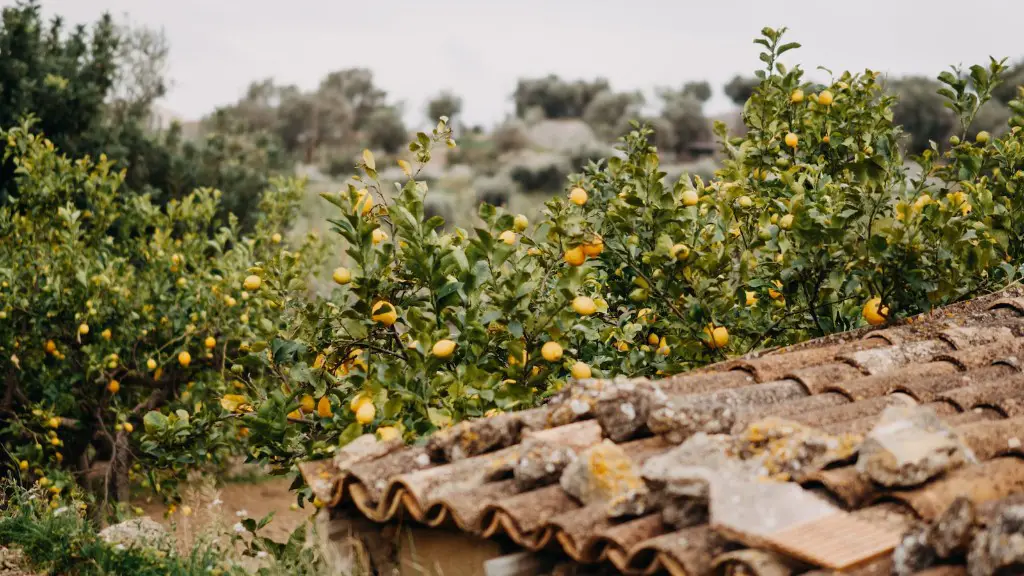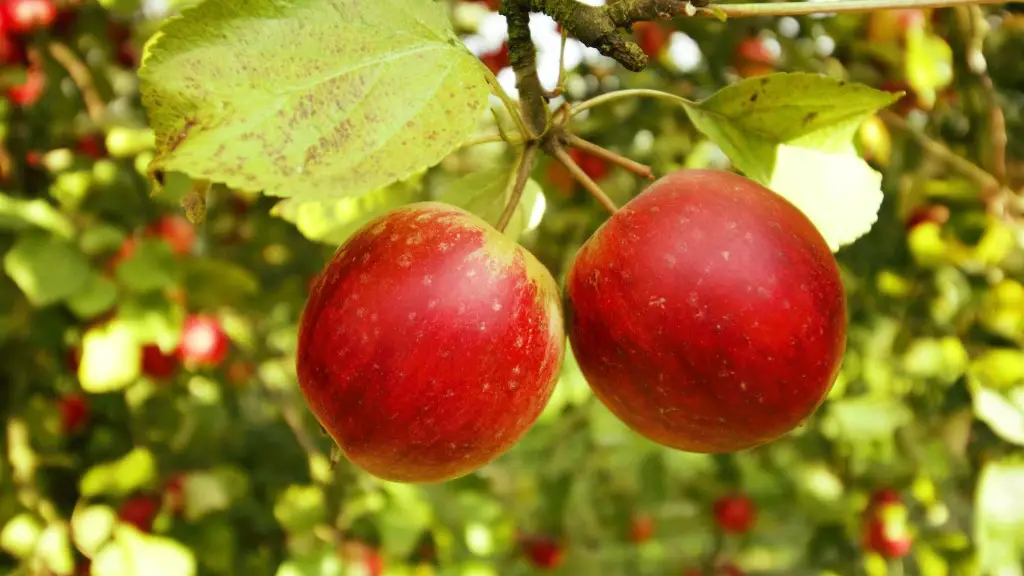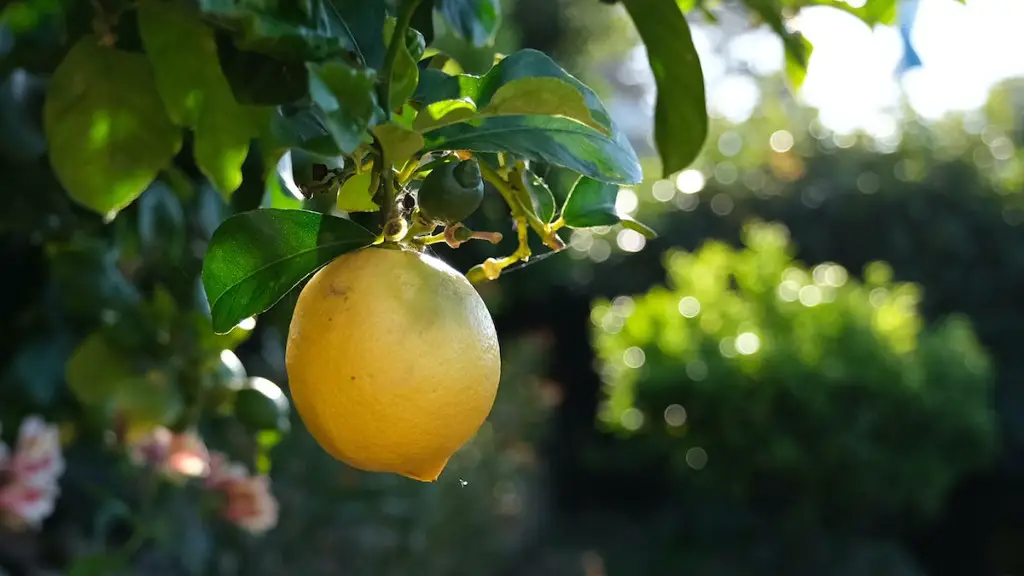Lemon trees are an attractive, fragrant addition to the garden and an excellent source of Vitamin C. But how tall can a lemon tree grow? Lemon trees are in the family Rutaceae, which includes nearly 300 species of species of trees and shrubs. The lemon tree can reach heights of up to twenty feet tall, while some larger varieties of lemons will require more supportive structures to stand tall without compromising the tree’s growth and fruit production.
A lemon tree will usually reach its fullest potential height within the first three or four years of its growth. Most lemon trees will reach full height when grown in a protected environment, such as an orchard or greenhouse, within the warmer months. Furthermore, smaller lemon varieties, such as the Meyer lemon tree, only reach heights of eight to ten feet tall and tend to have a wider spread at the base of the tree.
Lemon trees are also bred to be much shorter in stature than other citrus trees so that it is easier to mechanically harvest the fruit from the branches. Also, due to the fact that they grow in a wide range of climates, lemon trees tend to be more adaptable to different weather conditions and their branches are often less prone to damage by strong winds.
When caring for a lemon tree, it is important to remember to keep the tree’s height and width in mind while also taking into account soil conditions, fertilizer, insecticides and harvesting practice. If not properly maintained, a lemon tree can become too large and out of control, resulting in an embarrassment of branches and fruit, and thus needing to be heavily trimmed and pruned in order to bring the tree back into balance.
So, the height of a lemon tree can depend on a variety of factors, including environmental conditions, soil type, fertilizer type and harvesting practices. In order to ensure that a lemon tree reaches its fullest potential, it is important to ensure all of these factors are taken into consideration as the tree grows.
Environmental Conditions
The environment in which a lemon tree is grown can play a major role in determining how tall and strong the tree will be. Lemon trees, like most other fruit trees, are considered subtropical plants and require a minimum temperature of 65°F (18°C) in order to produce the best fruit. In addition, the soil quality and drainage should be taken into consideration when determining the growth potential of a lemon tree.
Ideally, lemon trees grow best in loose, slightly acidic soil, with a pH between 5.5-7.0 and plenty of organic matter. The soil should also be well-drained and have plenty of air pockets, as wet or compacted soil can inhibit the tree’s lateral root growth and prevent it from reaching its full height potential. Furthermore, providing the tree with ample sunlight and watering regularly will also help to encourage optimal growth.
Proper care and maintenance of the soil and environment can affect a lemon tree’s growth over time, and if the soil is kept loose and well-draining, the tree should achieve its full height potential with increased reliability.
Fertilizer Type
The type of fertilizer used to feed a lemon tree can also have an impact on the tree’s overall height. For optimal growth, a slow-release fertilizer that is high in nitrogen, potash and iron should be used, as these essential nutrients will help the tree reach its full potential in terms of size, as well as quality of fruit.
It is important to note that too much fertilizer can be detrimental to the tree’s growth, as excessive amounts of nitrogen can lead to a weak, spindly tree with a decreased yield of fruit. Therefore, an appropriate amount of slow-release fertilizer should be applied to the base of the tree in order to ensure optimal growth.
Furthermore, keeping the tree pruned and thinned regularly will also ensure that the tree is kept healthy and that competing branches do not create a competition for resources. Pruning will also help keep the tree’s overall height in check and allow a more even growth of the branches.
Insecticides and Pest Management
In order to keep a lemon tree growing in optimum condition it is important to practice proper pest and insect management. Insects and pests can quickly infest a lemon tree and can cause significant damage to the tree and its fruit if left untreated. Therefore, it is important to apply the appropriate insecticides and pest management strategies in order to prevent this from happening.
Also, it is important to note that some types of insecticides and pest control methods can be detrimental to the overall health of the tree, as they can affect its growth and fruit production. Therefore, it is essential that these measures are only implemented when necessary and are of the appropriate type. If done correctly, these measures can help to keep the tree at its full height potential and ensure a healthy crop of lemons year after year.
Harvesting Practices
Part of the process of achieving a lemon tree’s full height potential is ensuring that it is harvested correctly and efficiently. If not done correctly, harvesting can put an unnecessary strain on the tree and can lead to branches breaking and an excessive amount of fruit dropping prematurely. Therefore, it is important to understand the best practices for harvesting lemon tree fruit in order to ensure that optimum potential is reached.
For optimal growth and yield, it is best to wait until the lemon fruit is fully-grown, but not too ripe, before it is picked. This will prevent the branches from being overloaded with heavy fruit and allow for an efficient harvesting process. It is also important to use the right tools when harvesting, as improper tools can damage the tree’s branches and affect its growth. Lastly, it is important to properly prune any excess branches once the fruit is picked in order to promote strong, healthy growth and prevent the tree from becoming too large and top-heavy.
Conclusion
Overall, the height of a lemon tree will depend on a variety of factors, including the tree’s environment, soil, fertilizer and harvesting practices. Understanding these and implementing the appropriate measures can help the tree reach its full height potential and improve the overall health, yield and quality of the fruit.



